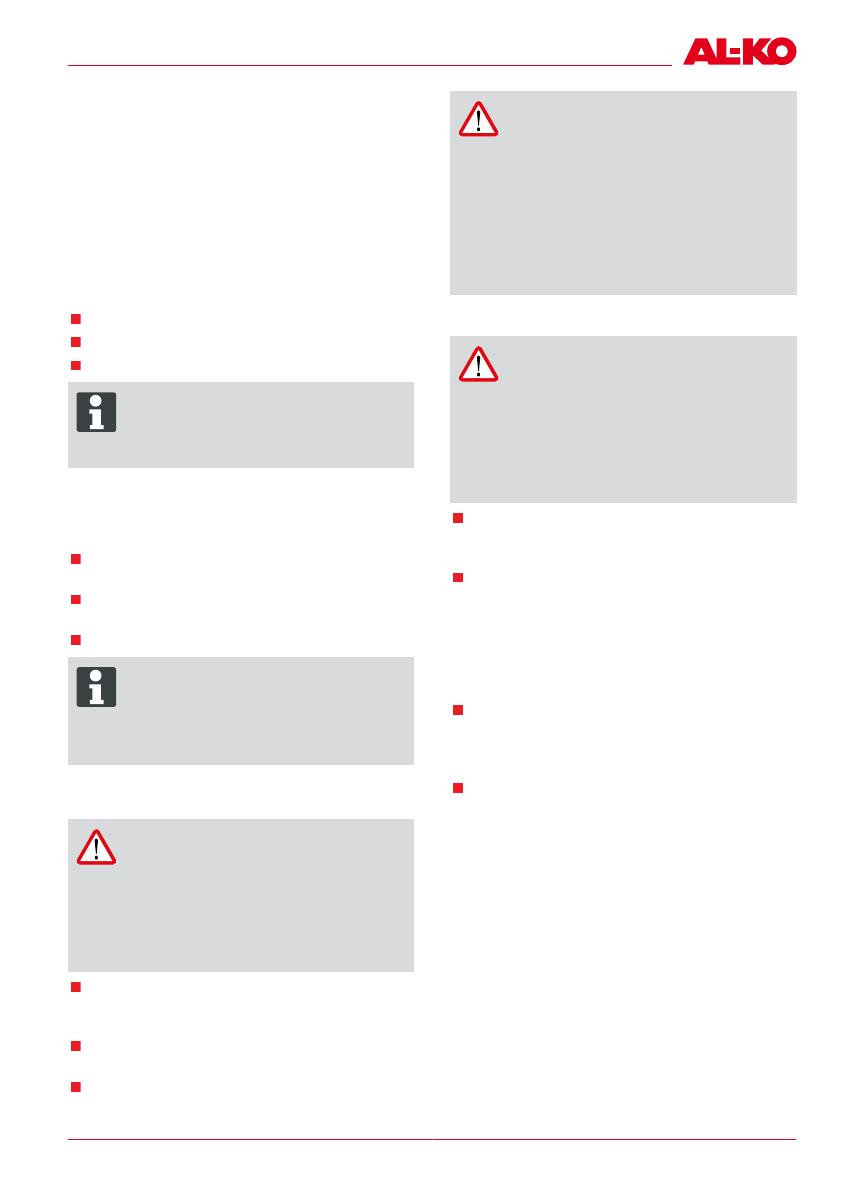
Product description
477 032_a 13
Inox stainless steel
Units marked with the designation "INOX" are
supplied in stainless steel. The structure and func-
tion are unaffected by this.
Designated use
The house water system is designed for private
use in the house and garden and is suitable ex-
clusively for the conveying of clear water and rain-
water.
The house water system is suitable for:
Watering the garden and premises
Water supply in the house
Pressure increase in the water supply.
ADVICE
If the pressure of the water supply is in-
creased, the local regulations must be
observed. Your sanitation expert will pro-
vide the necessary information.
Possible misuse
The house water system is not suitable for the
conveying:
Water containing sand, salt water and waste
water with textile and paper content
Aggressive, corrosive, explosive or fuming
chemicals or liquids
Fluids above 35°C.
ADVICE
The house water system must not be
used for conveying water for foodstuffs
or beverages.
The house water system is not suitable
for continuous use.
SAFETY INSTRUCTIONS
CAUTION!
Danger of injury!
Only use the machine and the extension
cable if it is in perfect technical condition!
Damaged units must not be used.
Safety and protective devices must not
be deactivated!
Children, or people who are not familiar with
the operating instructions, are not allowed to
use the machine.
Never lift, transport or suspend the unit using
the connection cable.
Unilateral modifications or conversions of the
unit are prohibited.
CAUTION!
Danger of injury from hot water
In extended use against the closed pres-
sure side (>10 min.), the water in the
pump can be severely heated up and can
be emitted in an uncontrolled manner!
Isolate the unit from the mains and allow
the pump and water to cool down. Start
the unit again only after all the faults have
been rectified!
Electrical safety
CAUTION!
Danger when touching voltage con-
ducting parts!
Disconnect the plug from the mains if the
extension cable is damaged or severed!
We recommend connecting a RCD (re-
sidual current operated device) having a
nominal residual current of < 30 mA.
The house mains voltage must agree with the
details quoted in the technical data, do not
use any other supply voltage.
The unit must only be operated with an
electrical installation in accordance with DIN/
VDE 0100, Part 737, 738 and 702 (swimming
pools). Protection must be provided by a 10 A
line protection switch and a RCCD (residual
current operated device) having a nominal re-
sidual current of 10/30 mA.
Use only extension cables that are suitable
for use outdoors - minimum cross-section 1.5
mm
2
. Cable drums should always be unrolled
completely.
Damaged or brittle extension cables must not
be used.
➯
Check the condition of your extension
cable each time you start to use the
equipment.
ASSEMBLY
Erect the unit
1. Prepare a flat solid area for erection.
2. Erect the unit horizontally and where it will not
be flooded.
➯
The unit must be protected from the rain
and direct water jet impingement.











